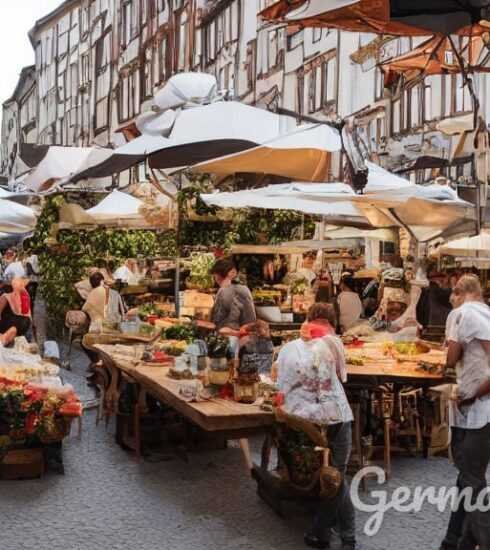Immerse in the German Culinary Exploration: Journey through Timeless Flavors and Secret Dishes
Embarking on Germany’s epicurean odyssey invites you to explore a rich and radiant tapestry of timeless tastes and hidden cuisines. Rooted in centuries-old traditions while embracing innovation, Germany’s culinary landscape offers an exciting gastronomic journey that tantalises the most discerning taste buds. From historic food markets and iconic beer halls to gourmet restaurants serving contemporary European delicacies, Germany’s food culture is deeply intertwined with its rich history, varied regions, and diverse populace.
A Historical Journey of German Cuisine
German cuisine’s origins can be traced back to the Middle Ages, where hearty, simple fare was the order of the day. Centuries later, its evolution has seen it retain its heartiness while incorporating both regional and international influences. Its evolution is as diverse and intricate as Germany’s storied past, hence contributing to the country’s contemporary culinary scene.
The Middle Ages: A Brief Overview
Germany’s culinary past starts from the Middle Ages, with a heavy reliance on meat, particularly pork, and staples like bread. Grüne Soße (green sauce), lentil soup and wheat beer are some of the common items that featured prominently in a typical German meal.
The Influence of the Italian Renaissance

Fast forward to the 15th and 16th centuries, when the Italian Renaissance began to leave its mark on German cooking. Italian chefs introduced items like pasta and ice cream to the court kitchens of German states, impacting the aristocratic dining experiences of the time.
Regional Delights of Germany
Like many other countries, Germany’s food is hugely diverse and varies from north to south, east to west. The country’s contrasting geography and climate, varying from the wind-swept coasts of the northern regions to the mountainous southern regions, led to the creation of a distinct regional cuisine.
North Germany: Seafood Galore
The coastal areas of North Germany offer an array of seafood dishes. The traditional Kümmel schnapps and century-old Fischbrötchen (fish sandwich) are gastronomic staples of these areas. You can find the entire culinary chronicles of this region in the comprehensive article available here.
East Germany: A History-Rich Plate

The Eastern regions boast pickles, hearty stews, and whole-grain bread, thanks to its agriculturally rich lands. If you’re a fan of robust, rustic flavors, this side of Germany is your culinary paradise.
West Germany: Meaty Delights
West Germany is known for its meat-intensive dishes like Sauerbraten and Bratwurst. Influenced highly by neighboring France and Belgium, the culinary landscape here is varied and refined.
South Germany: Alpine Richness
South Germany, with its Bavarian heartland, is where you’ll find hearty meat dishes, pretzels, and beer. The region’s Alpine landscape and cold climate contribute to its wholesome and robust cuisine.
Modern German Gastronomy

Modern German gastronomy has evolved with its populace. While a significant part of the cuisine still revolves around meat and potatoes, there has been a shift towards more plant-based dishes and a focus on organic, locally sourced ingredients. Moreover, German cuisine now integrates a lot of international influences, majorly from its Turkish populace.
Modern Germany can humbly boast of its rise in gourmet establishments. The country now houses over 300 Michelin starred restaurants and has seen the birth of new culinary movements like Neue Deutsche Küche (New German Cuisine), focused on reinterpretations of classic dishes. A detailed feature of this evolution can be found in the article available here.
Embracing the German Food Culture
Food culture in Germany is more than just eating; it’s a social event. Be it at a family’s dining table, at a local bakery during mid-day coffee, or during Oktoberfest, every meal is marked with conversation, laughter, and shared stories. This essence of communal dining has been finely curated in Germany over centuries and continues to be a staple part of their food culture.
Conclusion
Embarking on Germany’s epicurean odyssey unveils an array of flavors that narrate the country’s history, culture, and rich tradition. From age-old recipes passed down generation to modern reinterpretations of the classics to diverse regional specialities, German cuisine is a treasure trove of gastronomic delight. So, take up your cutlery, ready your taste buds, and prepare to unfold the chronicles of Germany’s timeless tastes and hidden cuisine.






